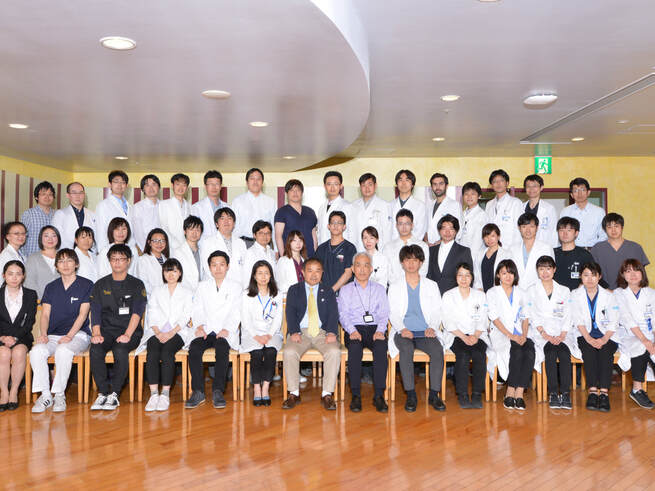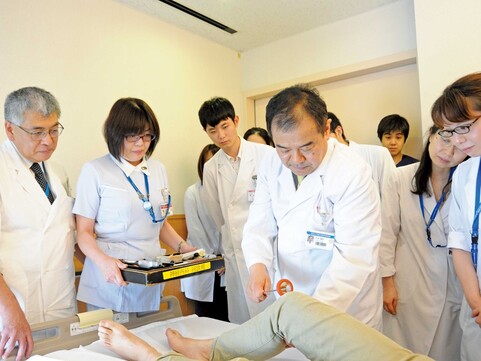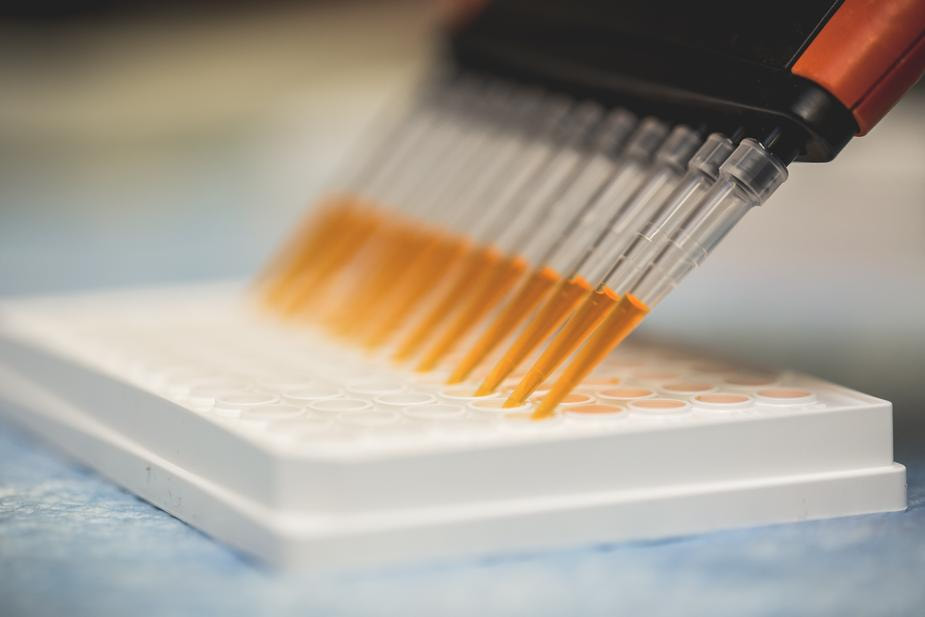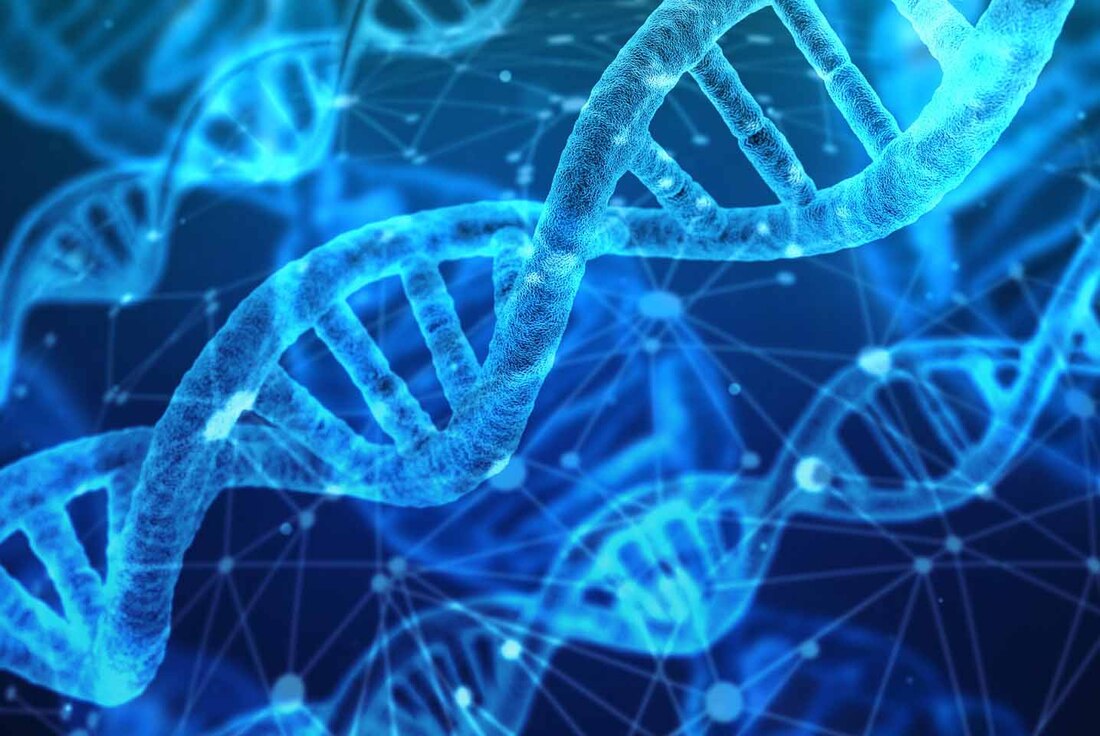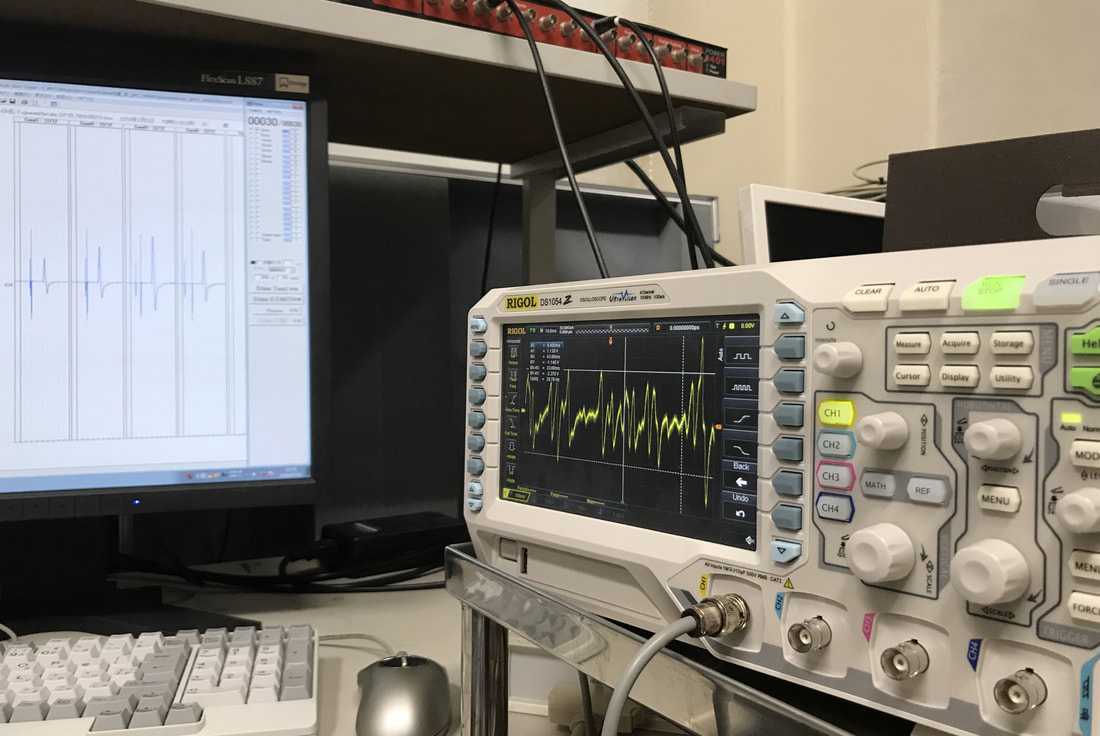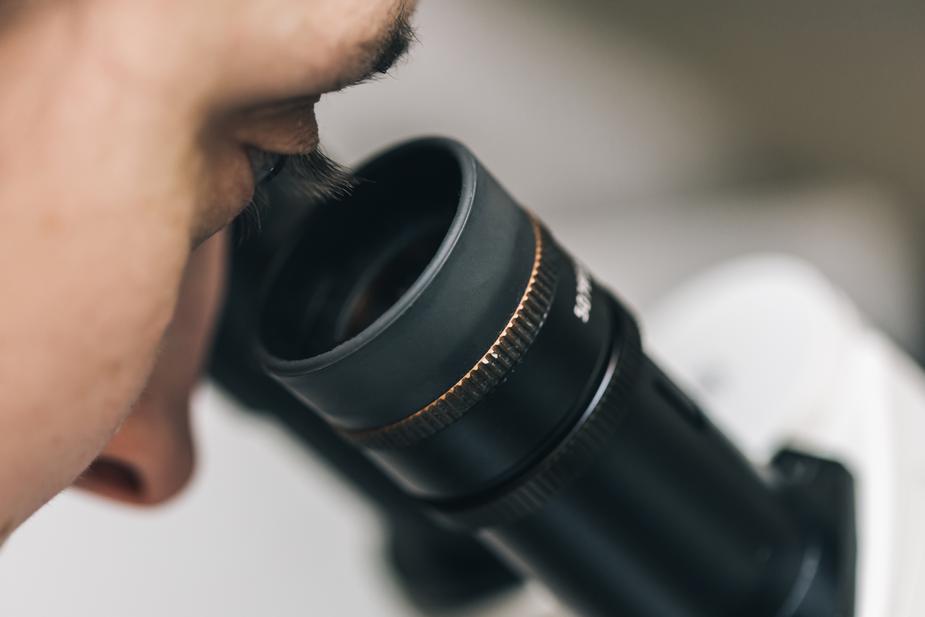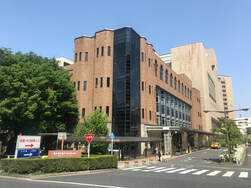Japanese / English
Introduction and Organization
|
The Department of Neurology at the University of Tokyo hospital provides a full range of clinical services for a wide variety of disorders affecting the brain, spinal cord, peripheral nerves, and muscle, with a particular emphasis on cerebrovascular disease, neurodegenerative disease, autoimmune neurological disease, infectious disease, epilepsy and headache. Our department was established by the founder Professor Yasuo Toyokura in 1964 as one Department in the Brain Research Institute in the University of Tokyo, and was succeeded by Professors Toru Mannen, Ichiro Kanazawa, and Shoji Tsuji. The organization of the Brain Research Institute was reorganized as the Division of Neuroscience of the Graduate School of Medicine in 1997. |
Tatsushi Toda, MD, PhD
Professor and Chairperson Department of Neurology, the University of Tokyo |
Our department is promoting research programs to elucidate the pathophysiological mechanisms of neurological diseases including neurodegenerative diseases, immune-mediated diseases and neuromuscular diseases, and to establish therapeutic approaches for these diseases. We are also providing excellent programs to train of neurologists to meet human society-imposed needs.
|
|
Do you want to know more about Neurology? Here is a video created by American Academy of Neurology. For our inpatient and outpatient clinical neurological services, please also visit the University of Tokyo Hospital web site. |
Current stAff (2022/11/01)
Name |
Title |
Speciality |
Professor |
Parkinson's Disease / Neuromuscular disease / Neurogenetics |
|
Associate Professor |
Parkinson's Disease / Dementia / Neurogenetics |
|
Lecturer |
Parkinson's Disease / Clinical Neurophysiology |
|
Lecturer |
Muscular Disease / Neuropathology |
|
Assistant Professor |
Muscular Disease / Neuroimmunology |
|
Assistant Professor |
Multiple System Atrophy / Adrenoleukodystrophy |
|
Assistant Professor |
Epilepsy / Clinical Neurophysiology |
|
Assistant Professor |
Stroke / Molecular Biology |
|
Assistant Professor |
Dementia / Molecular Biology |
Clinical activities
|
We offer clinical services in the field of Neurology. We are putting our effort to provide the patients with highly advanced clinical practice as well as on clinical activities connected to postgraduate education of Neurology.
We have outpatient clinics covering the broad fields of Neurology. Furthermore, we also provide clinics specialized to movement disorders, dementia (Memory Clinic), and epilepsy. In the in-patient ward, we offer programs for postgraduate education including the program for the first stage postgraduate education. We also offer the excellent training program with the goal to get the board of Neurologist. In 2005, we initiated deep brain stimulation for the treatment of movement disorders in cooperation with Department of Neurosurgery. |
Teaching activities
|
As for under-graduate education, our Department takes a part in lectures of Neurology for the 4th and 5th grade medical students, and clinical clerkship for the 5th grade medical students.
In the clinical clerkship we include small group lectures including neurophysiology, and stroke care. We are also putting our effort for Free Quarters where we offer various opportunities for medical students to be involved in research activities, and 2-3 medical students are conducting their research activities in the laboratories. In postgraduate education we offer the integrated program including Neurology as the part of the program of Internal Medicine. |
Regarding training for board-certified neurologists, we offer the excellent program including patients’ care, training in Neurophysiology and Neuropathology, consultation for Neurology, rotation at ER and super-vising of junior trainees. This program is integrated with clinical practice at the affiliated hospitals where rich experience is obtained for numerous cases in Clinical Neurology.
In Graduate School, we offer highly advanced research activities based on the interest of graduate students.
In Graduate School, we offer highly advanced research activities based on the interest of graduate students.
Research activities
Our research field covers broad fields related to neurological diseases, with the goals to elucidate the mechanisms of neurological diseases, and to eventually develop new therapeutic strategies. Our research activities include molecular genetics, developmental biology, cell biology, pharmacology, pathology, and physiology. We aim to integrate these broad research fields to better contribute to clinical neurology.
-
Molecular Therapeutics
-
Genetics
-
Molecular genetics
-
Neurophysiology
-
Neuropathology
-
Biochemistry
-
Neuroimmunology
<
>
In the development of molecular therapeutics that ameliorate α-dystroglycan (α-DG)-associated diseases, we identified the glycan unit ribitol 5-phosphate (Rbo5P) in α-DG and showed that enzyme activities of α-DG-associated diseases are involved in the synthesis of tandem Rbo5P. We also found that FKTN and FKRP can transfer GroP to O-mannosyl glycans by using CDP-glycerol (CDP-Gro) as a donor substrate. The analysis of mouse models of α-DG-associated diseases indicated that spatiotemporal persistence of functionally glycosylated α-DG may be crucial for brain development. These findings provide insight into pathogenesis and therapeutic strategies in α-DG-associated diseases. In addition, we have started a plan to conduct a First In Human clinical trial of a novel antisense nucleic acid NS-035 in Fukuyama-type congenital muscular dystrophy, which is common in Japan due to dystroglycanopathy.
Chief: Toda, T.
Member: Kanagawa, M., Kobayashi, K., Sudo, A., Fujino, G., Kitamura, A., Takahashi, A.
Reference:
Uenaka T, et al. In silico drug screening by using genome-wide association study data repurposed dabrafenib, an anti-melanoma drug, for Parkinson's disease. Hum Mol Genet 27:3974-3985, 2018
Taniguchi-Ikeda M, et al. Pathogenic exon-trapping by SVA retrotransposon and rescue in Fukuyama muscular dystrophy. Nature 478:127-131, 2011
Chief: Toda, T.
Member: Kanagawa, M., Kobayashi, K., Sudo, A., Fujino, G., Kitamura, A., Takahashi, A.
Reference:
Uenaka T, et al. In silico drug screening by using genome-wide association study data repurposed dabrafenib, an anti-melanoma drug, for Parkinson's disease. Hum Mol Genet 27:3974-3985, 2018
Taniguchi-Ikeda M, et al. Pathogenic exon-trapping by SVA retrotransposon and rescue in Fukuyama muscular dystrophy. Nature 478:127-131, 2011
We perform case-control association studies in Parkinson disease (PD) employing whole-exome sequence analysis to discover rare PD susceptibility variants. Employing a novel bioinformatics approach using GWAS loci in PD along with in vitro functional studies and MPTP mouse model analysis, we identified a novel drug candidate for the prevention of neurodegeneration in PD. We also identified genetic factors responsible for the individual difference of the effects of zonisamide by using GWAS and transcriptome analysis.
Chief: Toda, T.
Member: Satake, W., Uenaka, T., Cha, P.C., Fujino, G., Naito, T.
Reference:
Satake W, et al. Genome-wide association study identifies common variants at four loci as genetic risk factors for Parkinson's disease. Nature Genet. 41:1303-1307, 2009.
Kanagawa M, et al. Identification of a Post-translational Modification with Ribitol-Phosphate and Its Defect in Muscular Dystrophy. Cell Reports 14:2209-2223, 2016
Chief: Toda, T.
Member: Satake, W., Uenaka, T., Cha, P.C., Fujino, G., Naito, T.
Reference:
Satake W, et al. Genome-wide association study identifies common variants at four loci as genetic risk factors for Parkinson's disease. Nature Genet. 41:1303-1307, 2009.
Kanagawa M, et al. Identification of a Post-translational Modification with Ribitol-Phosphate and Its Defect in Muscular Dystrophy. Cell Reports 14:2209-2223, 2016
In the field of molecular genetics, we have developed the Genomic Medicine Research Support Center, and introduced next-generation sequencers to conduct comprehensive genome analyses to elucidate molecular bases of various neurological diseases. Regarding monogenic neurologic diseases, we conduct pedigree analyses in various neurological diseases including epilepsy, multiple system atrophy, amyotrophic lateral sclerosis, hereditary spastic paraplegia, spinocerebellar atrophy, and adrenoleukodystrophy. As for sporadic neurologic diseases, we perform case-control association studies in multiple system atrophy and amyotrophic lateral sclerosis to identify genetic factors underlying these diseases. On the basis of the findings that mutations in COQ2 are associated with familial as well as sporadic multiple system atrophy, we are conducting an investigator-initiated clinical trial using coenzyme Q10 for patients with multiple system atrophy. Genetic study on benign adult familial myoclonus epilepsy (BAFME), neuronal intranuclear inclusion disease (NIID), oculopharyngeal myopathy with leukoencephalopathy (OPML), and oculopharyngodistal myopathy type 1 (OPDM1) are performed, which have been revealed to be caused by expasions of noncoding repeats at our department. We reported safety and efficacy of hematopoietic stem cell transplantation for adolescent-/adulthood-onset cerebral form/cerebello-brainstem form of adrenoleukodystrophy. We are now studying a biomarker for adrenoleukodystrophy.
Chief: Toda, T.
Member: Tsuji, S., Mitsui, J., Ishiura, H., Matsukawa, T., Naruse, H., Kakumoto, T., Nagasako, Y., Hao, A., Shinmi, J, Mitsue, A., Mitsutake, A., Yamaguchi, N., Almansour, M. A., Porto, K. J. L., Orimo, K.
Reference:
Ishiura H, et al. Noncoding CGG repeat expansions in neuronal intranuclear inclusion disease, oculopharyngodistal myopathy and an overlapping disease. Nat Genet 2019 in press
Ishiura H, et al. Expansions of intronic TTTCA and TTTTA repeats in benign adult familial myoclonic epilepsy. Nat Genet 50:581-590, 2018
Mitsui J et al. Mutations in COQ2 in familial and sporadic multiple system atrophy. New Engl. J. Med. 369:233-44, 2013
Mitsui J, et al. Mutations for Gaucher disease confer a high susceptibility to Parkinson disease. Arch. Neurol. 66:571-6, 2009.
Chief: Toda, T.
Member: Tsuji, S., Mitsui, J., Ishiura, H., Matsukawa, T., Naruse, H., Kakumoto, T., Nagasako, Y., Hao, A., Shinmi, J, Mitsue, A., Mitsutake, A., Yamaguchi, N., Almansour, M. A., Porto, K. J. L., Orimo, K.
Reference:
Ishiura H, et al. Noncoding CGG repeat expansions in neuronal intranuclear inclusion disease, oculopharyngodistal myopathy and an overlapping disease. Nat Genet 2019 in press
Ishiura H, et al. Expansions of intronic TTTCA and TTTTA repeats in benign adult familial myoclonic epilepsy. Nat Genet 50:581-590, 2018
Mitsui J et al. Mutations in COQ2 in familial and sporadic multiple system atrophy. New Engl. J. Med. 369:233-44, 2013
Mitsui J, et al. Mutations for Gaucher disease confer a high susceptibility to Parkinson disease. Arch. Neurol. 66:571-6, 2009.
The human neurophysiology section specializes in studying the physiology of the human motor and sensory systems in awake healthy volunteers and the pathophysiology of neurological disorders using several non-invasive physiological methods, such as TMS, EEG, MEG, fMRI, NIRS and EOG. Our final goal is to devise new therapeutic techniques for intractable neurological disorders. To this end, the work extends from the study of spinal systems to basal ganglia and cerebral cortex. We are especially interested in Parkinson's disease and Epilepsy. Our lab has a long experience in the use of transcranial magnetic stimulation (TMS) which is able to stimulate neurons in intact human brain and has devised a highly effective repetitive TMS method to induce long-term effects (quadripulse stimulation, QPS). Currently, we are interested in mismatch negativity changes in ataxic syndrome as well as basalganglia disorders and entrainment of neuronal oscillation by peripheral nerve stimulation, sensor-oriented and sensor-free motion measurements in Parkinson disease, network analysis in patient with epilepsy using MEG, fMRI of spinal cord and neuronal excitability changes in dystonic patients.
Chief: Hamada, M.
Member: Shirota, Y., Kodama, S., Kainaga, M., Katsuse, K., Seto, A., Tokimura, R., and Miyano, R.
Reference:
Kodama S, Jo T, Yasunaga H, Michihata N, Matsui H, Kumazawa R, Shirota Y, Fushimi K, Toda T, Hamada M. Outcomes of gastrointestinal cancer surgeries in Parkinson's disease patients: A nationwide study. Parkinsonism Relat Disord. 2022 Feb 11;96:45-49.
Kainaga M, Shirota Y, Kodama S, Toda T, Hamada M. Effects of the Coronavirus Disease 2019 Pandemic on Motor Symptoms in Parkinson's Disease: An Observational Study. Mov Disord, 2021;36(11):2461-3.
Hamada M, Murase N, Hasan A, Balaratnam M, Rothwell JC. The role of interneuron networks in driving human motor cortical plasticity. Cereb Cortex. 2013 Jul;23(7):1593-605.
Shirota Y, et al. Supplementary motor area stimulation for Parkinson disease: a randomized controlled study. Neurology 80(15):1400-5, 2013.
Chief: Hamada, M.
Member: Shirota, Y., Kodama, S., Kainaga, M., Katsuse, K., Seto, A., Tokimura, R., and Miyano, R.
Reference:
Kodama S, Jo T, Yasunaga H, Michihata N, Matsui H, Kumazawa R, Shirota Y, Fushimi K, Toda T, Hamada M. Outcomes of gastrointestinal cancer surgeries in Parkinson's disease patients: A nationwide study. Parkinsonism Relat Disord. 2022 Feb 11;96:45-49.
Kainaga M, Shirota Y, Kodama S, Toda T, Hamada M. Effects of the Coronavirus Disease 2019 Pandemic on Motor Symptoms in Parkinson's Disease: An Observational Study. Mov Disord, 2021;36(11):2461-3.
Hamada M, Murase N, Hasan A, Balaratnam M, Rothwell JC. The role of interneuron networks in driving human motor cortical plasticity. Cereb Cortex. 2013 Jul;23(7):1593-605.
Shirota Y, et al. Supplementary motor area stimulation for Parkinson disease: a randomized controlled study. Neurology 80(15):1400-5, 2013.
In the field of neuromuscular diseases, we provide pathological diagnosis of biopsied materials from patients with myopathy or neuropathy. We also provide autoantibody testing for anti-ganglioside antibodies, muscle specific antibodies and paraneoplastic neurological antibodies. In research field, using biopsied muscles and collected serum samples, we have been studying the mechanisms of inflammatory myopathies from the view points of pathological changes, myositis specific autoantibodies, serum cytokines, and expression profiling of muscle samples. Our aim is to increase understanding of the etiology and pathogenesis of neuromuscular diseases.
Chief: Kubota, A.
Member: Shimizu, J., Maeda M.,
Reference:
Shimizu J, et al. IFNβ-1b May Severely Exacerbate Japanese Optico-Spinal MS in Neuromyelitis Optica Spectrum. Neurology 75:1423–1427, 2010.
Kubota A., et al., Cardiomyopathy and altered integrin-actin signaling in Fhl1 mutant female mice. Hum Mol Genet. 2019 Jan 15;28(2):209-219.
Chief: Kubota, A.
Member: Shimizu, J., Maeda M.,
Reference:
Shimizu J, et al. IFNβ-1b May Severely Exacerbate Japanese Optico-Spinal MS in Neuromyelitis Optica Spectrum. Neurology 75:1423–1427, 2010.
Kubota A., et al., Cardiomyopathy and altered integrin-actin signaling in Fhl1 mutant female mice. Hum Mol Genet. 2019 Jan 15;28(2):209-219.
In the biochemistry laboratory, autopsy brain analysis of Alzheimer's disease and Lewy body disease was performed, and a new gene involvement was discovered. Chronic cerebral hypoperfusion model mouse was created and its characteristics were analyzed, the technology was applied to analyze amyloid β metabolism under chromic hypoperfusion. On the other hand, we analyzed J-ADNI cohort data. Comparison with US-ADNI data revealed compatibility between the two cohorts. The influence of sex difference and education level, and the influence of serum calcium level was discovered. We analyzed the database of adverse drug reactions to COVID-19 vaccine and dementia drugs. Other activities include development of new imaging techniques using Raman microspectroscopy. We recently invented a novel high-sensitivity lipid imaging methodology using delipidation technique for sample preconditioning before Raman observation, which successfully determined spatial distribution of minor lipid species in porcine nerve and muscle tissues. We also developed a new optical sensor chip detecting biomarkers for Alzheimer’s disease using nanoimprint lithography (NIL)-based two-dimensional photonic crystal (2D-PhC), which achieved the sensitivity surpassing ELISA. We newly developed a detection device for our sensor chip, realizing automated, high-throughput measurement.
Chief: Yu Nagashima
Member: Ryo Ohtomo, Tatsuo Mano, Taro Bannai, Takeyuki Tsuchida, Kensuke Hamada, Kagari Mano, Gaku Ohtomo, Kenichiro Sato, Masanori Kurihara
Reference:
Iwata A, et al. Altered CpG methylation in sporadic Alzheimer’s disease is associated with APP and MAPT dysregulation. Hum Mol Genet 23: 648-656, 2014.
Mano T et al. Neuron-specific methylome analysis reveals epigenetic regulation and tau-related dysfunction of BRCA1 in Alzheimer's disease. Proc Natl Acad Sci U S A. 114;E9645-E9654, 2017.
Chief: Yu Nagashima
Member: Ryo Ohtomo, Tatsuo Mano, Taro Bannai, Takeyuki Tsuchida, Kensuke Hamada, Kagari Mano, Gaku Ohtomo, Kenichiro Sato, Masanori Kurihara
Reference:
Iwata A, et al. Altered CpG methylation in sporadic Alzheimer’s disease is associated with APP and MAPT dysregulation. Hum Mol Genet 23: 648-656, 2014.
Mano T et al. Neuron-specific methylome analysis reveals epigenetic regulation and tau-related dysfunction of BRCA1 in Alzheimer's disease. Proc Natl Acad Sci U S A. 114;E9645-E9654, 2017.
Neuroimmunology section is focused on understanding inflammatory disease of the CNS: namely multiple Sclerosis and neuromyelitis optica. Through application of both conventional and more contemporary immunological methods (FACS, ELISA, cell culture and NGS analysis), we aim to reveal disease-specific patho-mechanisms for better diagnosis and treatment of immune-mediated CNS inflammation.
Chief: Sakuishi, K
Member: Koguchi A, and Kawasaki R
Reference:
Rangachari M, Zhu C, Sakuishi K, et al., Bat3 promotes T cell responses and autoimmunity by repressing Tim-3–mediated cell death and exhaustion. Nat Med. 2012 Sep;18(9):1394-400.
Kurtulus S, Sakuishi K, et al., TIGIT predominantly regulates the immune response via regulatory T cells. J Clin Invest. 2015 Nov 2;125(11):4053-62.
Chief: Sakuishi, K
Member: Koguchi A, and Kawasaki R
Reference:
Rangachari M, Zhu C, Sakuishi K, et al., Bat3 promotes T cell responses and autoimmunity by repressing Tim-3–mediated cell death and exhaustion. Nat Med. 2012 Sep;18(9):1394-400.
Kurtulus S, Sakuishi K, et al., TIGIT predominantly regulates the immune response via regulatory T cells. J Clin Invest. 2015 Nov 2;125(11):4053-62.


